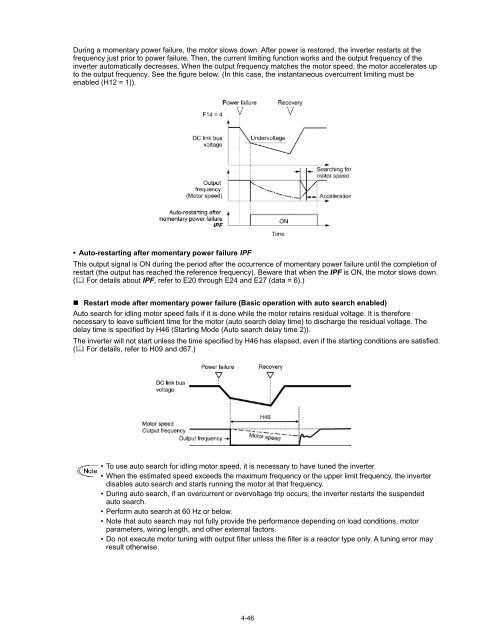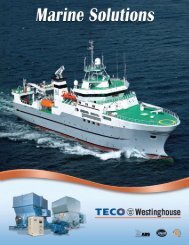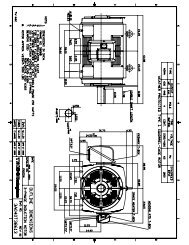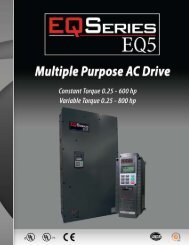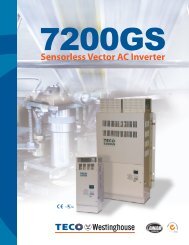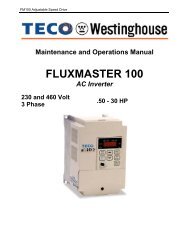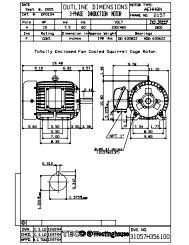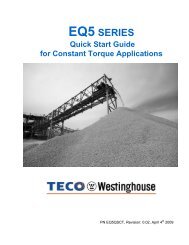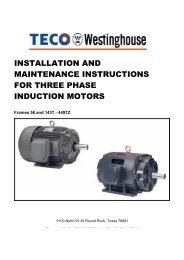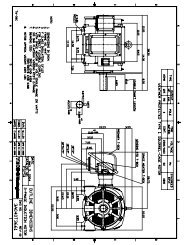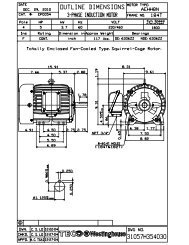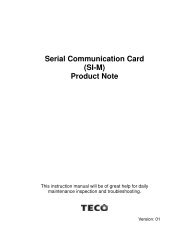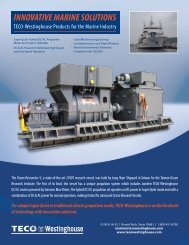EQ7 Series Instruction Manual - TECO-Westinghouse Motor Company
EQ7 Series Instruction Manual - TECO-Westinghouse Motor Company
EQ7 Series Instruction Manual - TECO-Westinghouse Motor Company
You also want an ePaper? Increase the reach of your titles
YUMPU automatically turns print PDFs into web optimized ePapers that Google loves.
During a momentary power failure, the motor slows down. After power is restored, the inverter restarts at the<br />
frequency just prior to power failure. Then, the current limiting function works and the output frequency of the<br />
inverter automatically decreases. When the output frequency matches the motor speed, the motor accelerates up<br />
to the output frequency. See the figure below. (In this case, the instantaneous overcurrent limiting must be<br />
enabled (H12 = 1)).<br />
• Auto-restarting after momentary power failure IPF<br />
This output signal is ON during the period after the occurrence of momentary power failure until the completion of<br />
restart (the output has reached the reference frequency). Beware that when the IPF is ON, the motor slows down.<br />
( For details about IPF, refer to E20 through E24 and E27 (data = 6).)<br />
• Restart mode after momentary power failure (Basic operation with auto search enabled)<br />
Auto search for idling motor speed fails if it is done while the motor retains residual voltage. It is therefore<br />
necessary to leave sufficient time for the motor (auto search delay time) to discharge the residual voltage. The<br />
delay time is specified by H46 (Starting Mode (Auto search delay time 2)).<br />
The inverter will not start unless the time specified by H46 has elapsed, even if the starting conditions are satisfied.<br />
( For details, refer to H09 and d67.)<br />
• To use auto search for idling motor speed, it is necessary to have tuned the inverter.<br />
• When the estimated speed exceeds the maximum frequency or the upper limit frequency, the inverter<br />
disables auto search and starts running the motor at that frequency.<br />
• During auto search, if an overcurrent or overvoltage trip occurs, the inverter restarts the suspended<br />
auto search.<br />
• Perform auto search at 60 Hz or below.<br />
• Note that auto search may not fully provide the performance depending on load conditions, motor<br />
parameters, wiring length, and other external factors.<br />
• Do not execute motor tuning with output filter unless the filter is a reactor type only. A tuning error may<br />
result otherwise.<br />
4-46


